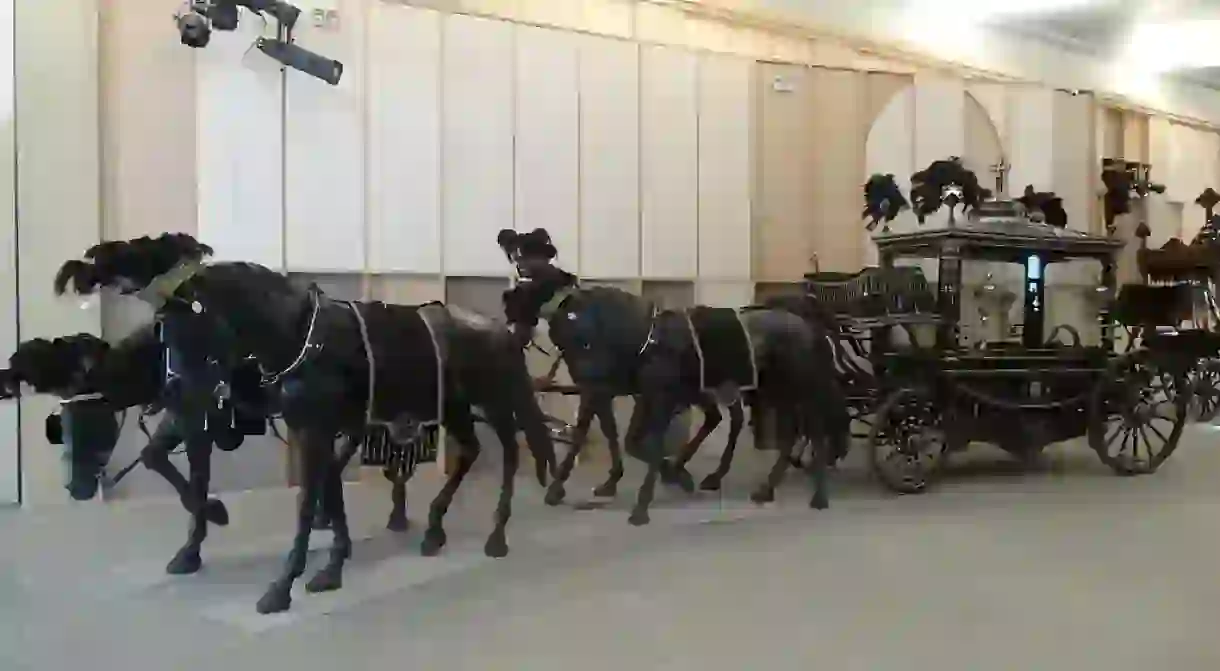Discover Barcelona’s Museum Of Funeral Carriages

While no one knows how they’ll end their days, one thing we can have some say in is how we make our final goodbye. For centuries, families have invested small fortunes in giving their loved ones a suitable send off to the afterworld. The Museu de Carrosses Fúnebres in Barcelona is home to one of the finest collections of funeral carriages and hearses in Europe, and helps retrace the history of funeral customs in Spain over the past few centuries.
Competing with the likes of the Sagrada Família and the Gothic Cathedral, the Funeral Carriage Museum is not one of Barcelona’s most famous or popular museums – but it is one of the city’s most unique and unusual. Open since the 1970s, the museum was founded by the then municipal funeral parlour manager Cristóbal Torra, as a way to preserve the funeral carriages of times past for future generations. Technological and cultural changes meant that many of the funeral carriages which had for years served the local community were obsolete, yet Torra sensed that these carriages should be preserved for posterity.

The custom of employing funeral carriages to transport the deceased to their final resting place was popularized in Barcelona during the 18th century when the first cemetery was inaugurated outside the city walls. The rapid increase in urban population as well as epidemics of cholera and other diseases meant that many of the church cemeteries inside the city were a public sanitation liability and prompted the local authorities to take measures. The first cemetery outside the city walls was built in Poblenou, a half hour walk to the north of the city, and therefore required the use of vehicles to transport the deceased to their burial spot.
The museum’s collection consists of 13 original carriages which are all distinct in appearance and use. The ‘Spider’, as it was known locally at the time, was the carriage most frequently used for funeral services in the city, carrying the working classes and local tradesman to their final resting place. This simple carriage is modest in appearance, although families could add extra pomp by paying for a higher number of horses to pull the carriage (up to a total of six). On the other hand, the ‘Stove’ was employed only for the most luxurious ceremonies, commemorating the lives of the city’s noblemen and bourgeoisie. During the 1920s it was used during the funeral ceremonies of many of the city’s elite such as artist and writer Santiago Rusiñol and politician Enric Prat.

In addition to the hearses themselves, used to carry the coffin, there are also a number of carriages used by members of the grieving family to make their way to the ceremony and accompany their deceased. One of the most striking carriages of this kind is the ‘Black Widow’, a sombre carriage covered entirely in black which was exclusively used to transport grieving widows. Interestingly, many of these accompanying vehicles were also used for other purposes within the municipality and so needed to be able to take on a less morbid appearance when necessary.













